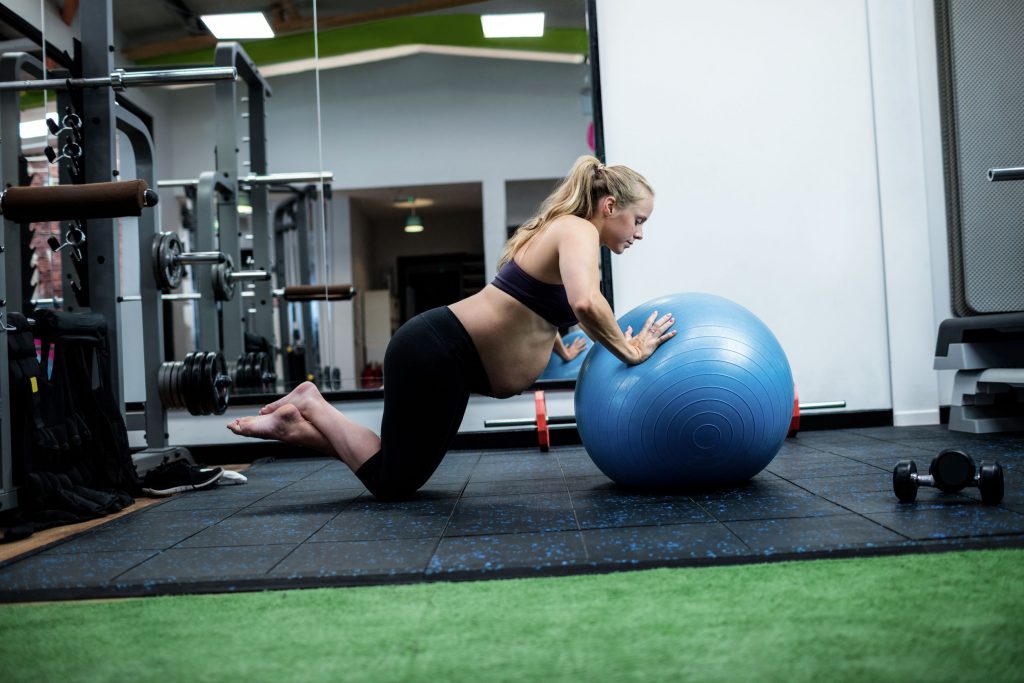Fitness During Pregnancy: What’s a Girl To Do?
It’s not lost on me I have a Y chromosome and that discussing pregnancy and how to train during and after it can be a bit, well, peculiar. I mean, it’s something my body will never experience, so how can I discuss the topic without coming across as some mansplaining a-hole?
Simple.
50% of the human population is female. Surprise!, roughly 50% of my clientele are female. And, as it happens, I have worked with several women through their pregnancies (and after) and have always felt it important to understand and respect the nuances that manifest during this delicate time in a woman’s life – both pre and postpartum.
While I very much operate under the umbrella that every pregnancy is different regardless of one’s previous fitness level and experience and that how someone feels during any exercise or workout should dictate the path taken – progressions, regressions, loading, volume, etc – I also feel there’s a strong stigma that women shouldn’t train during and after pregnancy.
Come on.
The body is preparing for something a helluva lot more traumatizing than a set of squats or deadlifts. It’ll be okay.
What’s more, as my colleague and women’s health expert, Dr. Sarah Duvall, often says with regards to postpartum considerations: “women need to lift shit to fix shit.”
And it’s on that note I’m gonna take my little Y chromosome and STFU. I’m elated to introduce to you another woman whom I feel is generating a ton of useful information on the topic of training during and post pregnancy: Terrell Baldock.
She wrote today’s guest post and it’s awesome.
Enjoy.

Copyright: wavebreakmediamicro / 123RF Stock Photo
Fitness During Pregnancy: What’s a Girl To Do?
With all the random misinformation out there it’s tough to know how you should workout – or heck, whether you should even workout at all – during and after pregnancy.
Here’s the good news: The short answer is yes.
You should continue to exercise during and after pregnancy.
You can keep being the best version of yourself. And isn’t that what it’s all about?
But exercise during and after pregnancy needs to be done the right way.
Lindsey’s Story
My client Lindsey was a competitive volleyball player who wanted to get right back into hard training and competition after her daughter was born.
Then, reality set in.
Lindsey noticed when she was working at a high level of intensity, she’d pee a little.
Still, she pushed through.
That continued until she became pregnant with her second baby.
When she went through the same experience, Lindsey knew she needed to see her doctor.
Bad News: She had a grade-two bladder prolapse. She was told: “Lindsey, you can’t play volleyball anymore.”
Lindsey was crushed.
This is when Lindsey and I started working together. My role as a coach is to show women like Lindsey exactly how her prenatal fitness and postnatal fitness programming could affect her body both during and after pregnancy.
Unfortunately, women are cleared for exercise at the six-week checkup with little to no information regarding rehab, their core, or pelvic floor.
As you can imagine, women like Lindsey feel betrayed by their body. It’s as if they have an entirely new body to “figure out” as they begin their new lives as mothers.
I want to help you avoid common problems such as pelvic organ prolapse, incontinence, and even other issues such as diastasis recti that haven’t healed postpartum.
Training Before Pregnancy
With up to 50% of the female population experiencing pelvic floor dysfunctions like incontinence and pelvic organ prolapse, the combination of pregnancy and childbirth along with high level exercise are leaving women vulnerable.
Even more shocking?
Most women who train hard during pregnancy never have symptoms until they’ve had their baby.
Training During Pregnancy
Generally speaking, you can continue to train the way you did before you were pregnant in your first trimester.
But adaptations need to be made in the second and third.
A common misconception that you’ve probably heard is that you can continue to do what you’ve always done during your pregnancy because your body is well conditioned.
Big mistake.
First trimester
Pregnancy brings on structural change that impacts your fitness performance and how you move naturally, which begins in the second trimester.
In the first trimester, the core and pelvic floor isn’t a big concern but this is a time where rapid change is happening physiologically. Energy is low and nausea may be a factor.
Women also tend to experience breast tenderness which may make exercise feel impossible.
If the symptoms are intense, exercise may be sporadic at best.
Second Trimester
In the second trimester, symptoms usually subside or disappear completely, and because of this, women are ready to return to their regular program. This is also where the body starts to visibly change and the Transverses Abdominis becomes inhibited (Hodges et al 2003).
Alignment changes begin to put more pressure on the core on pelvic floor. This is generally when the pelvis anteriorly tilts, the ribs shift and move behind the pelvis.
If this isn’t taken care of and training is continued, the glutes become inactive and the low back, adductors, abductors, and hip flexors take over.
Many women will begin to experience pelvic discomfort and/or pain like pelvic girdle pain, SI pain, and lower back pain which occurs in 45% of pregnant women and 25% of postpartum women (Wu et al 2004).
Third Trimester
In the third trimester, 100% of pregnant women will experience diastasis recti which is classified as the “unnatural separation of the abdominal wall” (Mota et al 2014).
DR is a completely natural part of the pregnancy process, but it can be exacerbated by the nature of the training as well as alignment in addition to the growing baby.
The pelvic floor is vulnerable, especially in the third trimester because of the physical and physiological changes. The pelvic floor isn’t designed to carry the load of a 200 pound back squat and meet the demands of pregnancy. This is where women experience issues postpartum.
Combine that with stretched and a weakened core and the impact of vaginal delivery (Sleep et al 1984), this can lead to pelvic floor complications like incontinence or pelvic organ prolapse if a woman returns to her fitness program before taking the steps to recover, rehab, and recondition first.
Training Post Pregnancy
The body doesn’t completely heal in six weeks postpartum.
It has taken nine months to adapt to the changes that occur during pregnancy. It takes at least that much time for the body to completely heal.
And that’s with rehab.
In fact, if Diastasis Recti hasn’t completely healed within the first 8-weeks postpartum, research shows that it won’t heal on itss own (Coldron et al 2008).
Whether you’re a lifter, runner, or enjoy taking classes at your local gym, you can still partake in your favourite activity. But you will need to cut back during your pregnancy.
Retraining following birth to optimize your performance long term.
New moms are often eager to return to high impact fitness, boot camps, or athletics before their bodies are ready.
Most skip the rehab and retraining process.
This leaves some of these women with less than desirable results like peeing their pants, pelvic organ prolapse (where the pelvic organs descend through the vagina), back/hip discomforts or pain, and lagging performance when working at a high intensity.
As your pregnancy progresses, you’ll find that you’ll need to make modifications to your lifts. In this video, I will show you how to modify your deadlifts using a barbell and kettlebells.
And there’s a lot more information in my Barbell Training For Pregnancy: Your 3 Step Guide For Maximizing Performance During and After Pregnancy.
It features simple and actionable steps to maximize your core and pelvic floor function, improve performance, and most importantly, avoid the complications that can arise from postnatal exercising.
Click HERE to access your free guide today.
About the Author
Terrell Baldock is a Prenatal and Postnatal Exercise Specialist in London, Ontario, Canada. She specializes in working with women with core and pelvic floor dysfunctions, and prepares them for the demands of pregnancy, birth and postpartum recovery. Check out her award-winning website Mom’s Fitness Boutique.



Comments for This Entry
Must Read Fitness Articles: 11/03/2017 – Guided Fitness Blog
[…] “Fitness During Pregnancy: What’s a Girl to do?” […]November 3, 2017 at 6:09 pm |